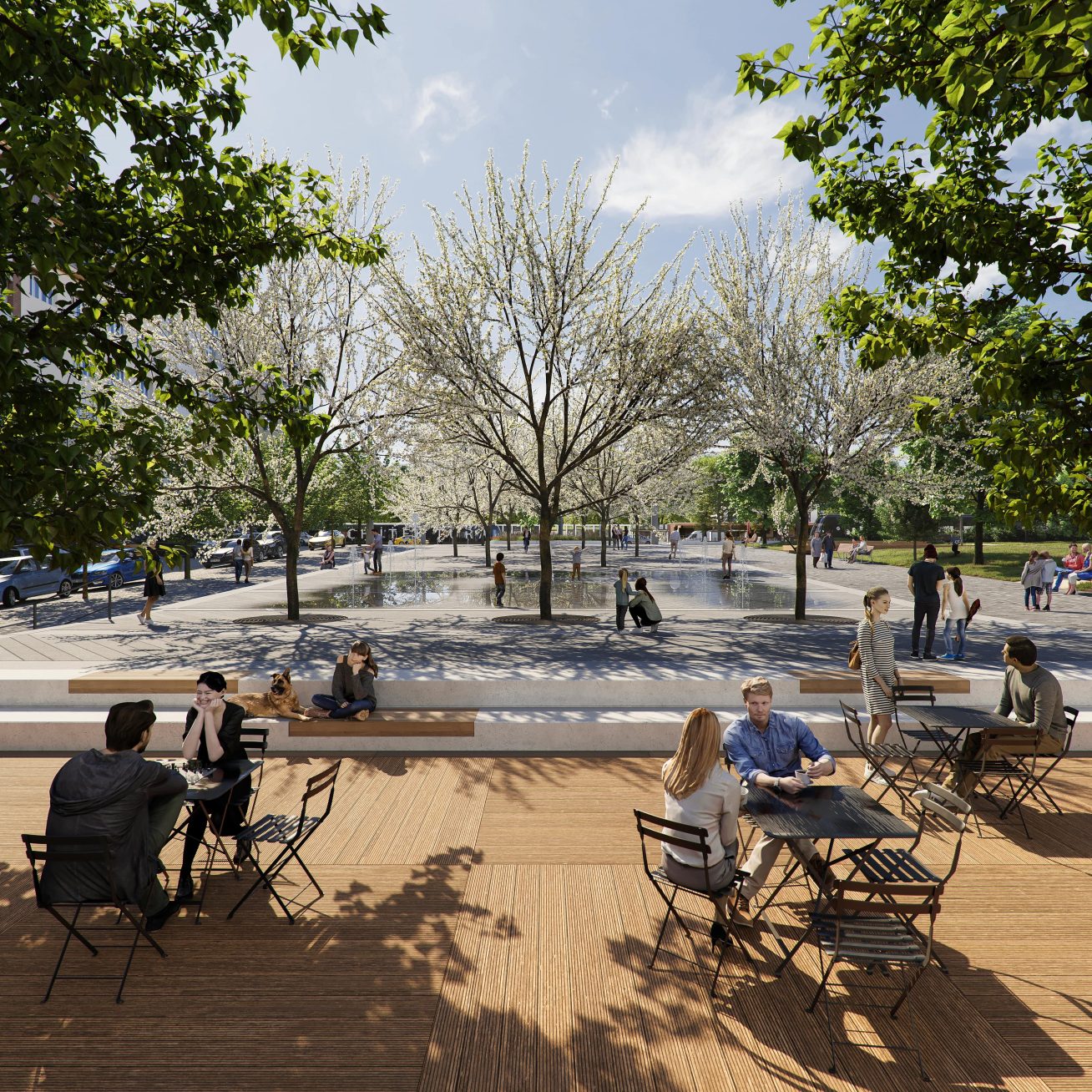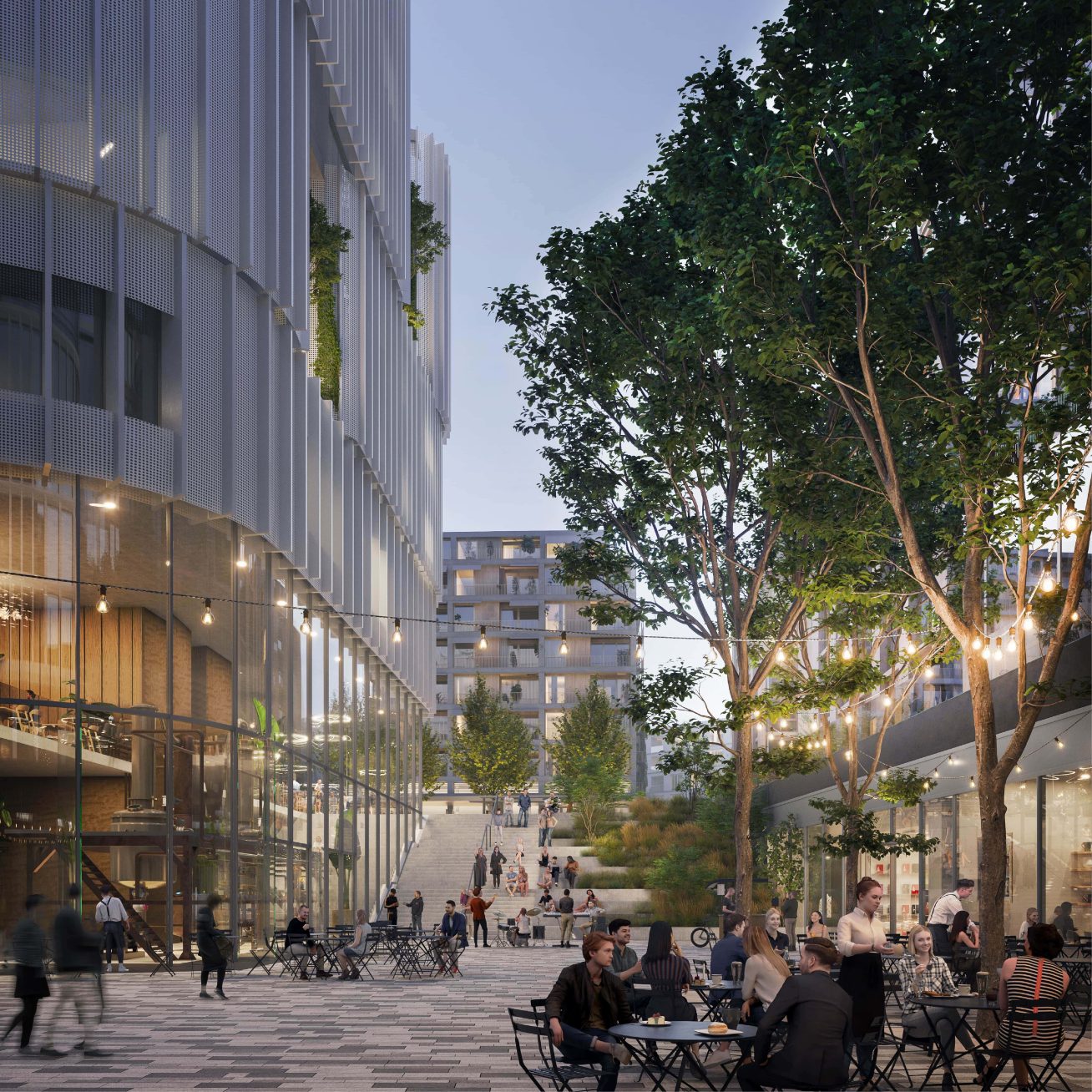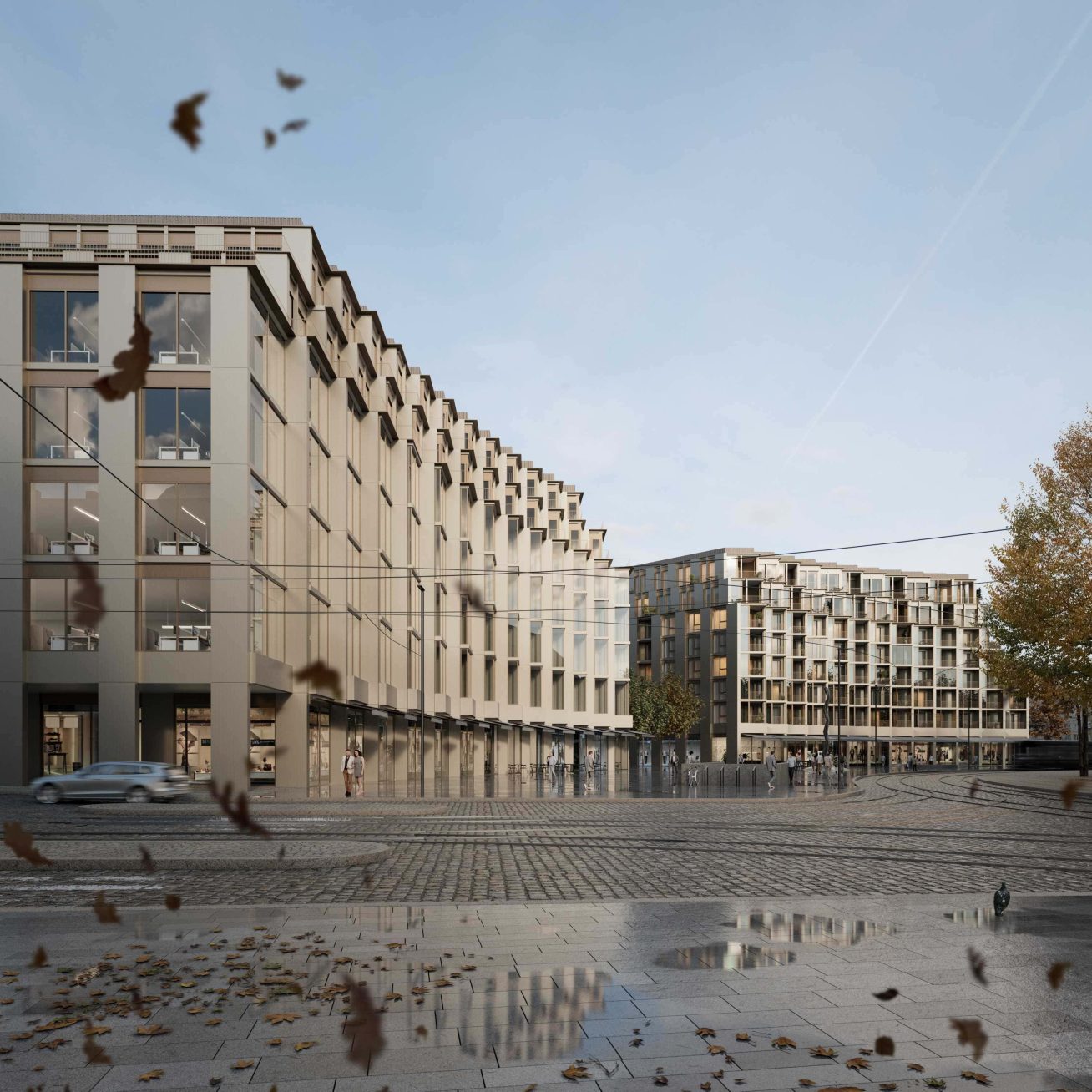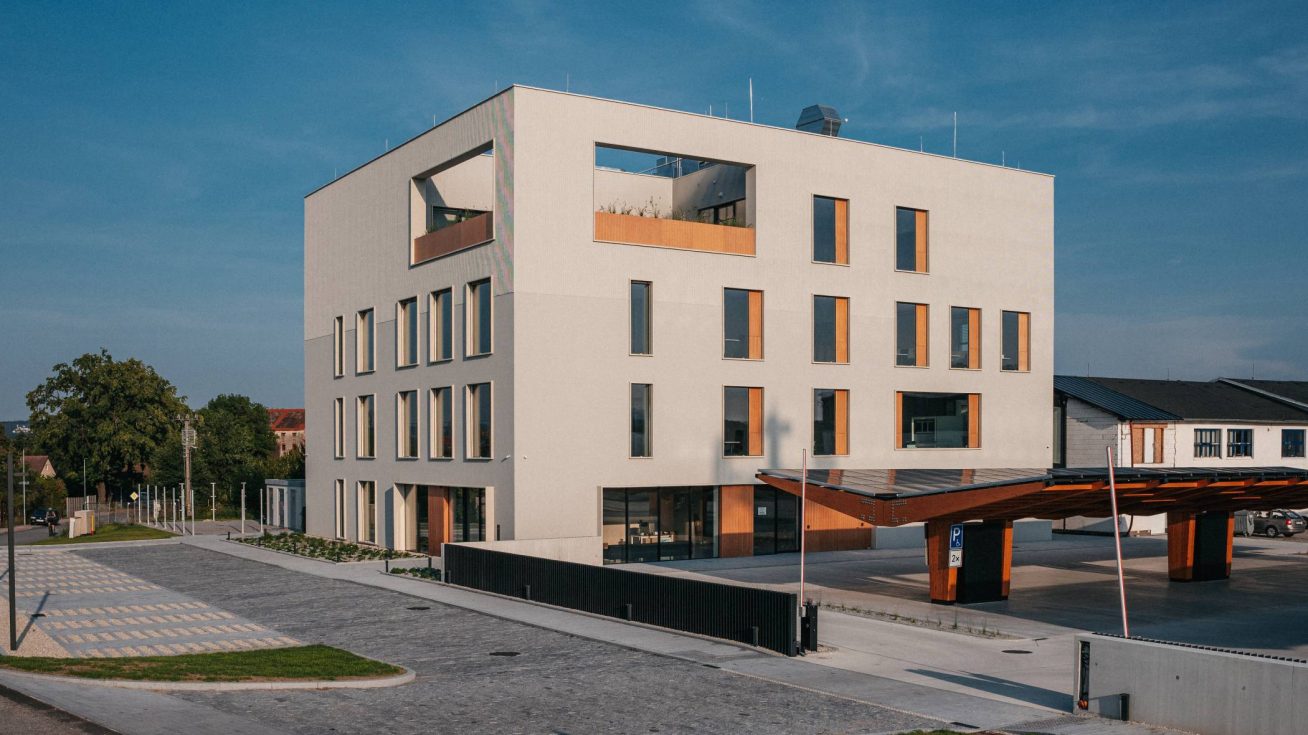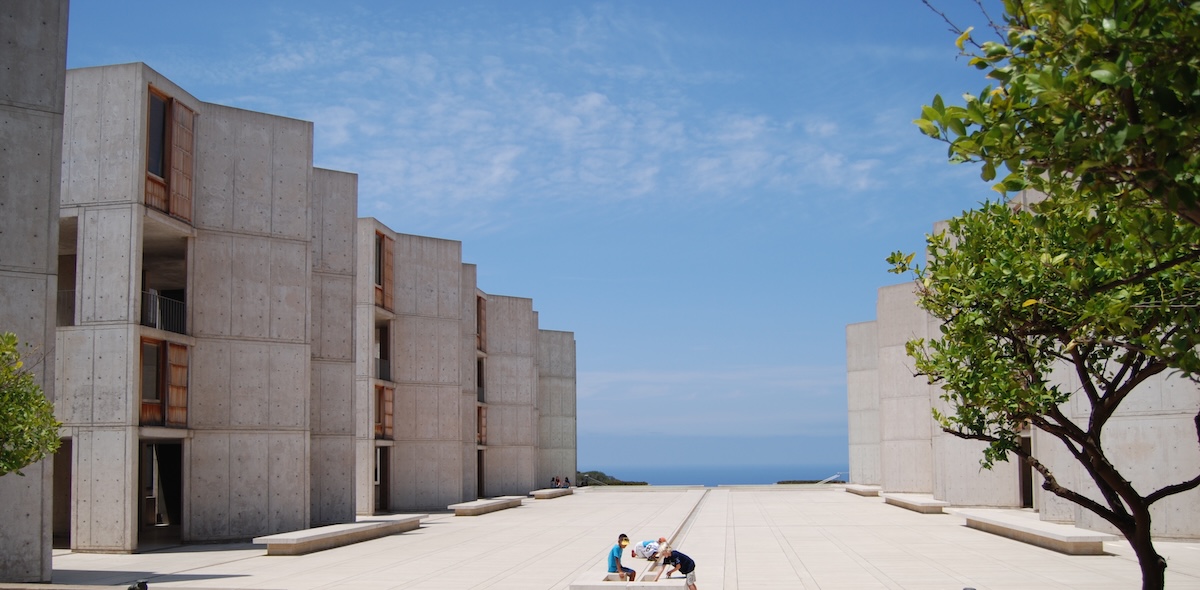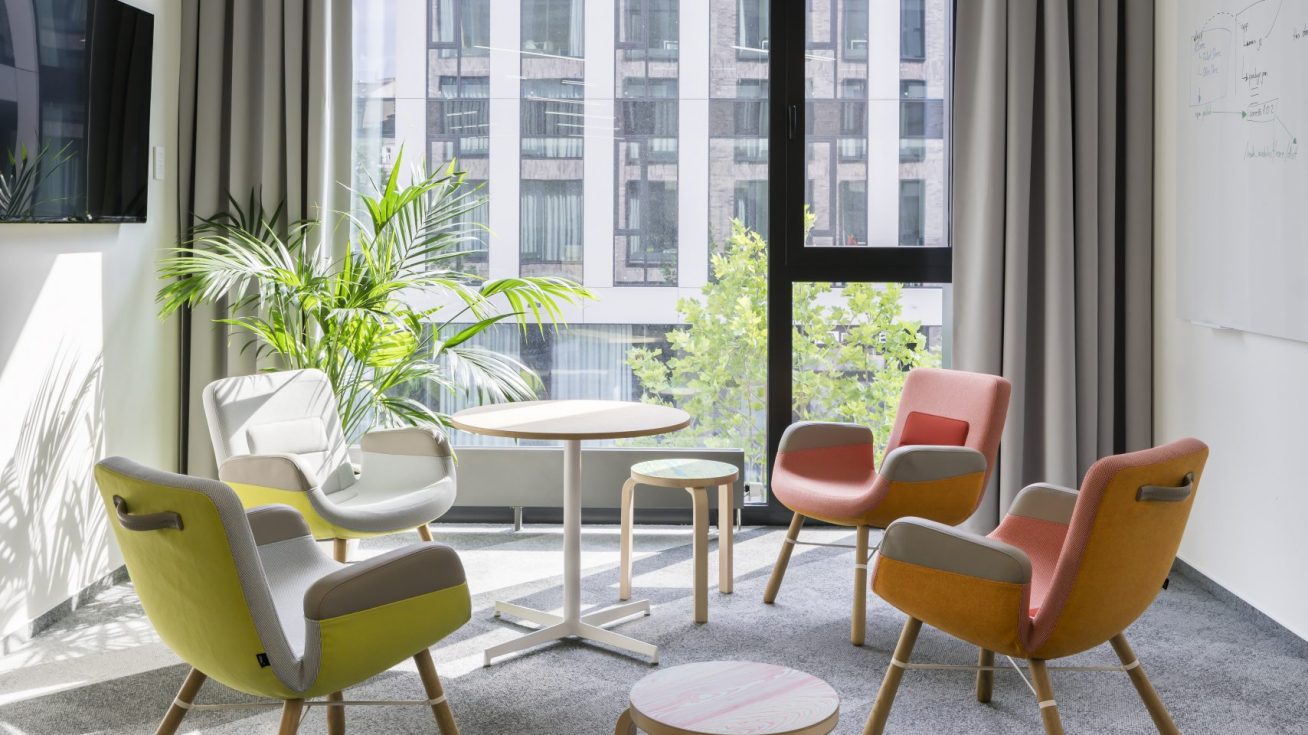
Silvia, today you are Head of Competition at Perspektiv Studio, but what were your beginnings and how did your career develop?
I joined Perspektiv in 2015 as a second year student at the Faculty of Architecture and had only basic knowledge of AutoCAD and Adobe. My very first assignment was fairly simple, to complete a table of doors on an office project for STRV. As time went on and I gained more experience, I became more and more involved in coordinating the team, which I enjoyed and allowed me to develop not only my architectural skills but also my management skills.
After five years of work, in 2020 I was there for our first competition project – the Square of George of Lobkowitz, which we won. I still remember that day very fondly. In 2021 I was appointed team leader responsible for the competition team and since then the competition merry-go-round has hardly stopped. In addition, since May 2023, I have become production manager, and I am responsible for the final deliverables that go out to clients and the public. This part of my job involves a lot of setting standards and processes within the company.
What were the biggest challenges you faced in the beginning and how did you overcome them?
The biggest challenge was certainly the high standards in perspectives that we still hold today. Martin and Jan, our founders, are very demanding and expect us to do precise work both creatively and technically. I started with minimal experience, often receiving only sketches with notes from which I had to create a working, well thought out design. I then learned a lot on projects with Jan, who is not only a great architect but also an excellent teacher. The key to personal development was definitely not to give up and to take every comment as an opportunity for growth, not criticism.
You have been with Perspektiv for almost 10 years. What motivates you to continue with one company?
The main motivation, in my opinion, is the lack of a fixed limit to how far you can grow as an architect. At Perspektiv, we have the opportunity to constantly develop and expand our competencies. If one wants to, one can become a lead architect or even a BIM expert. This open and transparent company culture allows me to innovate and constantly bring new ideas. It is also important that what we do is meaningful – we shape the environment around us. It may sound a bit like a cliché, but it’s incredibly motivating.
What qualities and skills do you consider most important for success in architecture?
Enthusiasm and the ability to find the right solutions. It is important to listen to what people want and to adapt your proposals to the place and context. Architecture is a team effort and requires openness, collaboration and mutual respect. It is also important to constantly learn, innovate and not be afraid to push your imaginary bar higher. Every architect should definitely know his or her strengths, whether it is creativity, technical detail or management skills.
What would you recommend to newcomers to the field who are considering a career in a larger studio?
Don’t be afraid to jump right in and learn from the people around you. Watch what they’re working on and collaborate with them. Don’t just be tied to your task, keep your eyes open and constantly learn new things from your more experienced colleagues. Do you enjoy making creative concepts or solving the technical detail of a façade? We all have one. It is also important to travel and learn how architecture is done outside the Czech Republic or Europe. And most importantly – don’t give up at the first hurdle. A lot of people think that only they are the best, but it often takes humility.
Can you recall a project that you are particularly proud of? What was your contribution and what did you learn from it?
There are dozens of these projects, but one that particularly stands out for the level of experience gained was the 4th quadrant of Dejvice Square. It was a six-month intensive project where we collaborated with a Dutch studio. Imagine having two studios and great ideas from different teams to bring together. It was challenging but rewarding at the same time. I learned how to combine different typologies within the designs as well as manage a large group of architects, urban planners and landscapers. In the end, we won 2nd place in the competition, which I consider a huge achievement.
How do you keep up to date with the latest trends and technologies in architecture?
The most important thing for me is practice and constant learning from my colleagues. I also follow new trends and technologies when I travel beyond the borders of the Czech Republic and Slovakia, where I come from. It is definitely interesting to read professional journals or follow successful studies on LinkedIn. Collaboration with people who bring new know-how to the company is also important.
How do you see the future of architecture and what role do you think young architects and technology will play in it?
I am optimistic about the future of architecture. I believe that the projects we are planning today will one day be realized and will improve people’s everyday lives. Especially in urban planning, projects from design to implementation are really a long haul. Young architects will then play a key role in creating sustainable and innovative solutions. The upcoming generation is certainly very sensitive to the climate impact of buildings. Technologies such as AI can help us to a certain extent, but the human brain and emotions will, in my opinion, remain irreplaceable in terms of creativity.

